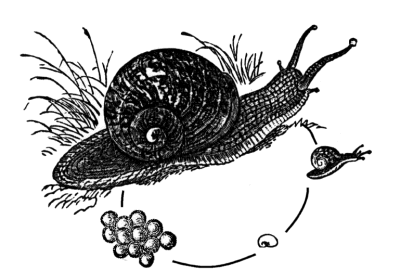Reproduction
Daedalochila hausmani does not have information specifically on it for reproduction, however, since it is a terrestrial Gastropoda, we can assume that it has a reproductive life cycle like that of other terrestrial Gastropoda. We can also assume that its reproductive structures, like other terrestrial Gastropoda, function in producing sperm, receiving foreign sperm, and producing eggs (Tompa, 1984).
In the phylum Gastropoda, species are either hermaphroditic, having both male and female structures, or dioecious, having separate sexes (Hickman et al., 2009). We can assume that Daedalochila hausmani is hermaphroditic since it belongs to the subclass Pulmonata, a subclass that only contains hermaphroditic species (Morton et al., 1964). Sometimes in hermaphroditic species, to prevent self-fertilization, the snails exchange sperm bundles called spermatophores (Hickman et al., 2009). To exchange sperm, many snails go through a courtship (Tompa, 1984). This usually happens at night and can include dances or biting (Tompa, 1984). After the courtship, the foreign spermatophores are placed inside the bursa stalk where they enter the spermatheca (Tompa, 1984). The sperm then leaves the body of the spermatophore and migrates down the snail's tail until they reach the oviduct. The sperm migrates up the oviduct, which is part of spermoviduct, and are stored in the spermathecal sacs (Tompa, 1984). The snail stores its own sperm in the hermaphrodite ducts until it can exchange it with another snail or until conditions are harsh and self-fertilization is required (Tompa, 1984). The eggs are stored in the snail's uterus, which also functions in forming the shell and perivitelline membrane of the egg (Tompa, 1984).
After fertilization, terrestrial Gastropoda lay their eggs in holes in the ground and sometimes under logs (Hickman et al., 2009). Unlike marine Gastropoda, terrestrial Gastropoda do not have a free-swimming veliger larval stage (Boss, 1982). Their development is direct, meaning their larval stages happen within a capsulated egg and a juvenile, that looks like their adult form, only smaller, hatches directly from the egg (Hickman et al., 2009).
Daedalochila delecta's eggs take about 20 days to hatch and about two years for the snails to reach maturity (Baker, 1939). Since Daedalochila delecta is in the same genus as Daedalochila hausmani, we can assume that Daedalochila hausmani's development is similar to this.
Image from the Randolph College R-MWC Sponsored Jubilee Author of image is Harry G. Lee.
Family Development Center Summer Science Camp website.
Continue to references.
Go back to home page.

